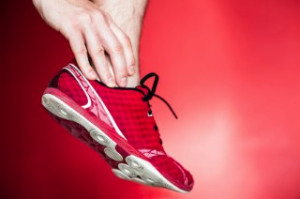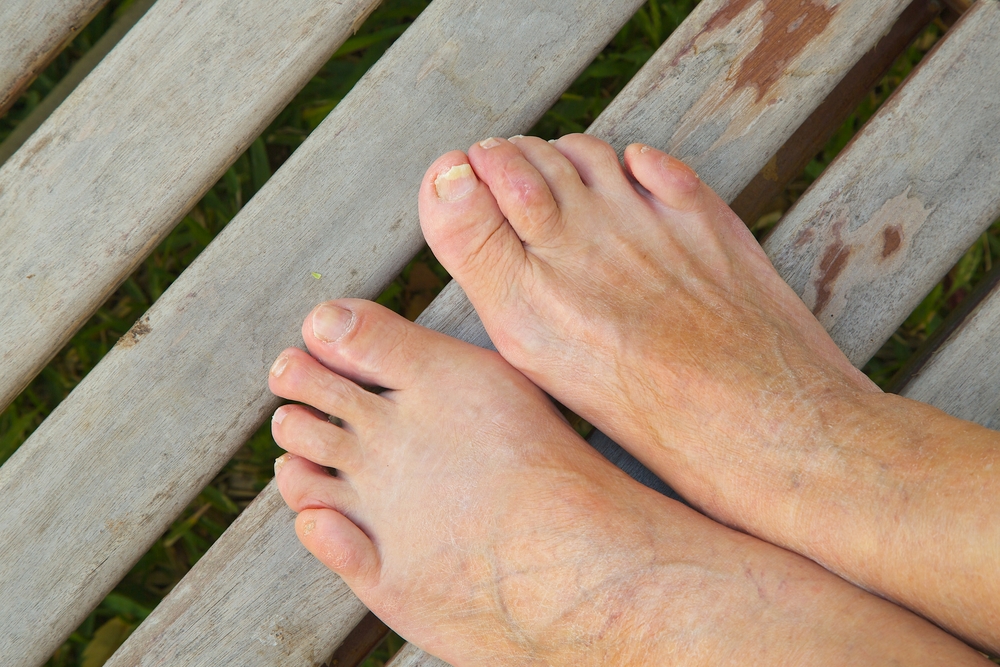Connect With Us
Blog
Items filtered by date: February 2023
Stiffness in the Ankle After Running

Many runners experience stiffness in their ankles after running. This is a common side effect of the amount of force that passes through the ankle during a run. It can affect the range of motion and mobility of the ankle. In some cases, it may become difficult to bear weight and lead to limping. Studies have indicated that the faster you run, the more likely you are to develop ankle stiffness. Further, the way you run may affect the ankle as well. For example, a heel-first footstrike is more likely to contribute to ankle stiffness than a toe-first style of running. Other possible causes of ankle stiffness include a sprain, arthritis, or plantar fasciitis. Lastly, check the wear and tear on your running shoes. It may be time to replace them, which is recommended by running experts between 350 and 500 miles. Shoes that lack ample support may contribute to ankle stiffness after running. For an examination and diagnosis to determine the cause of your ankle stiffness, it is suggested that you consult a podiatrist before it gets worse.
Ankle pain can have many different causes and the pain may potentially be serious. If you have ankle pain, consult with one of our podiatrists from Bergen Foot & Ankle. Our doctors will assess your condition and provide you with quality foot and ankle treatment.
Ankle pain is any condition that causes pain in the ankle. Due to the fact that the ankle consists of tendons, muscles, bones, and ligaments, ankle pain can come from a number of different conditions.
Causes
The most common causes of ankle pain include:
- Types of arthritis (rheumatoid, osteoarthritis, and gout)
- Ankle sprains
- Broken ankles
- Achilles tendinitis
- Achilles tendon rupture
- Stress fractures
- Tarsal tunnel syndrome
- Plantar fasciitis
Symptoms
Symptoms of ankle injury vary based upon the condition. Pain may include general pain and discomfort, swelling, aching, redness, bruising, burning or stabbing sensations, and/or loss of sensation.
Diagnosis
Due to the wide variety of potential causes of ankle pain, podiatrists will utilize a number of different methods to properly diagnose ankle pain. This can include asking for personal and family medical histories and of any recent injuries. Further diagnosis may include sensation tests, a physical examination, and potentially x-rays or other imaging tests.
Treatment
Just as the range of causes varies widely, so do treatments. Some more common treatments are rest, ice packs, keeping pressure off the foot, orthotics and braces, medication for inflammation and pain, and surgery.
If you have any questions, please feel free to contact our offices located in Fort Lee, NJ and Flushing, NY . We offer the newest diagnostic and treatment technologies for all your foot care needs.
Two Types of Hammertoe

Hammertoe is a common foot condition and is considered to be a deformity. It is noticeable as the joints in the middle toes bend upward, forcing the toes to point downward, somewhat resembling a hammer. It generally happens as a result of wearing shoes that do not have adequate room for the toes to move freely in, gradually causing them to shift abnormally. Some patients develop corns on top of the affected toes, as they touch the top of the shoe while walking. Hammertoe can fall into two categories that are referred to as flexible or rigid. As the name implies, flexible hammertoe can move at the joint, and relief may come from using a protective pad. Rigid hammertoe may press the joints out of alignment, and different relief methods may be used. If you have any form of hammertoe, it is a good idea to confer with a podiatrist who can determine what the best course of treatment is for you.
Hammertoes can be a painful condition to live with. For more information, contact one of our podiatrists of Bergen Foot & Ankle. Our doctors will answer any of your foot- and ankle-related questions.
Hammertoe
Hammertoe is a foot deformity that occurs due to an imbalance in the muscles, tendons, or ligaments that normally hold the toe straight. It can be caused by the type of shoes you wear, your foot structure, trauma, and certain disease processes.
Symptoms
- Painful and/or difficult toe movement
- Swelling
- Joint stiffness
- Calluses/Corns
- Physical deformity
Risk Factors
- Age – The risk of hammertoe increases with age
- Sex – Women are more likely to have hammertoe compared to men
- Toe Length – You are more likely to develop hammertoe if your second toe is longer than your big toe
- Certain Diseases – Arthritis and diabetes may make you more likely to develop hammertoe
Treatment
If you have hammertoe, you should change into a more comfortable shoe that provides enough room for your toes. Exercises such as picking up marbles may strengthen and stretch your toe muscles. Nevertheless, it is important to seek assistance from a podiatrist in order to determine the severity of your hammertoe and see which treatment option will work best for you.
If you have any questions, please feel free to contact our offices located in Fort Lee, NJ and Flushing, NY . We offer the newest diagnostic and treatment technologies for all your foot care needs.
Why Do My Toes Hurt?

Toe pain can be mildly irritating to debilitating. Common causes of toe pain are arthritis, bunions, and nail conditions. Such pain can come on suddenly or develop over time. As tiny as toes are, they contain a total of 14 bones, as well as joints, muscles, tendons, ligaments, nerves, and blood vessels. All these things can become injured, infected, or prone to other conditions that cause pain. Arthritis can lead to stiffness, swelling, and pain in toe joints. A bunion is a bony growth on the outside of the big toe joint that can cause irritation and deformity. An ingrown toenail can cause pain, especially when it rubs against a shoe and is infected. If you experience persistent toe pain, visit a podiatrist who can diagnose the problem and provide treatment for relief.
Toe pain can disrupt your daily activities. If you have any concerns, contact one of our podiatrists of Bergen Foot & Ankle. Our doctors can provide the care you need to keep you pain-free and on your feet.
What Causes Toe Pain?
Most severe toe pain is caused due to a sports injury, trauma from dropping something heavy on the toe, or bumping into something rigid. Other problems can develop over time for various reasons.
Toe pain can be caused by one or more ailments. The most common include:
- Trauma
- Sports injury
- Wearing shoes that are too tight
- Arthritis
- Gout
- Corns and calluses
- Hammertoe
- Bunions
- Blisters
- Ingrown toenails
- Sprains
- Fractures (broken bones)
- Dislocations
When to See a Podiatrist
- Severe pain
- Persistent pain that lasts more than a week
- Signs of infection
- Continued swelling
- Pain that prevents walking
Diagnosis
In many cases the cause of toe pain is obvious, but in others, a podiatrist may want to use more advanced methods to determine the problem. These can range from simple visual inspections and sensation tests to X-rays and MRI scans. Prior medical history, family medical history, and any recent physical traumatic events will all be taken into consideration for a proper diagnosis.
Treatment
Treatments for toe pain and injuries vary and may include shoe inserts, padding, taping, medicines, injections, and in some cases, surgery. If you believe that you have broken a toe, please see a podiatrist as soon as possible.
If you have any questions please feel free to contact our offices located in Fort Lee, NJ and Flushing, NY . We offer the newest diagnostic tools and technology to treat your foot and ankle needs.
Keep Your Feet Healthy So You Can Stay Active
Down at the Heels

Heel pain can happen for a variety of reasons. While it can be caused by a systemic illness, such as gout or rheumatoid arthritis, it often develops from overuse. Common causes of heel pain include plantar fasciitis, heel spurs, and Achilles tendonitis. Plantar fasciitis is an inflammation of the plantar fascia, the band of tissue that runs from the heel to the toes on the sole of the foot. This can happen when the plantar fascia is overloaded or overstretched and small tears may develop. A heel spur is an abnormal bony growth at the junction of the plantar fascia and heel bone. A spur can come from strain on the plantar fascia and muscles of the foot. Achilles tendonitis is an inflammation of the Achilles tendon. It is triggered by overuse, particularly excessive jumping in sports. With all these conditions, ill fitting or worn out shoes can aggravate the problem. If you have heel pain that does not respond to rest, shoes that fit well, and are appropriate for your activity, please see a podiatrist who can properly diagnose the problem and provide treatment.
Many people suffer from bouts of heel pain. For more information, contact one of our podiatrists of Bergen Foot & Ankle. Our doctors can provide the care you need to keep you pain-free and on your feet.
Causes of Heel Pain
Heel pain is often associated with plantar fasciitis. The plantar fascia is a band of tissues that extends along the bottom of the foot. A rip or tear in this ligament can cause inflammation of the tissue.
Achilles tendonitis is another cause of heel pain. Inflammation of the Achilles tendon will cause pain from fractures and muscle tearing. Lack of flexibility is also another symptom.
Heel spurs are another cause of pain. When the tissues of the plantar fascia undergo a great deal of stress, it can lead to ligament separation from the heel bone, causing heel spurs.
Why Might Heel Pain Occur?
- Wearing ill-fitting shoes
- Wearing non-supportive shoes
- Weight change
- Excessive running
Treatments
Heel pain should be treated as soon as possible for immediate results. Keeping your feet in a stress-free environment will help. If you suffer from Achilles tendonitis or plantar fasciitis, applying ice will reduce the swelling. Stretching before an exercise like running will help the muscles. Using all these tips will help make heel pain a condition of the past.
If you have any questions please contact our offices located in Fort Lee, NJ and Flushing, NY . We offer the newest diagnostic and treatment technologies for all your foot and ankle needs.

